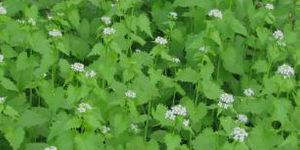Earth & The Environment
Controlling Deer Populations May Help Native Plant Species
MAR 27, 2014 12:00 AM PDT
Share
Bumblebees Learn Through Experience and Communication
 Experience is an essential part of the human learning and understanding process-and according to a new study, it is useful to bumblebees as well. Researchers from the University of Guelph in Ontario, Canada, have been studying the learning capabilities of bumblebees, and have published their work in two recent articles: one in Animal Cognition and the other in Psyche.
Experience is an essential part of the human learning and understanding process-and according to a new study, it is useful to bumblebees as well. Researchers from the University of Guelph in Ontario, Canada, have been studying the learning capabilities of bumblebees, and have published their work in two recent articles: one in Animal Cognition and the other in Psyche. The first study investigated the ability of bees to show scaffold-learning capability, where the bees work their way through tasks of increasing complexity and build upon their earlier learning to handle more complex tasks-a concept generally associated with human learning.
Artificial flowers were loaded with sugary syrup as a reward for the bees. These flowers presented a variety of challenges for the bees to solve to access the syrup, including tasks that required moving obstacles.
The flowers were then arranged in order of the tasks complexity, from lowest to highest, and bees were introduced to the flowers in stepwise fashion. The bees were able to solve the simpler challenges, and build upon their learning to solve the more challenging obstacles in order.
In contrast, a control group of bees that were introduced to the complex challenges first were unable to access the syrup. Without the simpler problems to solve, it appears the bees were frustrated or intimidated and gave up trying-much like teens that are intimidated by a higher-level math class.
The second study focused on the communication between the bees in solving problems-teaching, if you will. Another set of artificial flowers was created which forced the bees to walk along the bottom side of a disk to receive their syrupy reward. After several days of exposure to these flowers, the bees adjusted and used this feeding mechanism on a regular basis.
Meanwhile, a second group of bees were contained in a mesh container that allowed them to see the first group of bees feeding on the artificial flowers. After some time, those bees were allowed to access the artificial flowers for feeding. Armed with observation but not any direct experience, the second group of bees was able to access the syrup in only 70 seconds.
A third group of bees, serving as a control, was exposed to the artificial flowers. Without experience or observation to draw from, the bees gave up within 30 minutes without ever reaching the syrup.
Thus the bees clearly learned from observation. "Bee see, bee do" may never replace "monkey see, monkey do" in our lexicon, but at least the mechanism appears to be valid.
As a follow-up, bees that were experienced in feeding on the artificial flowers were placed in a hive with bees that had never been exposed to the artificial flowers. The inexperienced bees were then exposed to the artificial flowers, and were able to reach the syrup in 3.5 minutes. There must have been some "teaching" communication within the hive, but exactly how is not clear.
It's possible that the bees are using the same type of communication that they employ to tell beehives in the wild where flowers are located.
Feel free to use this article to inspire your teen in his or her math classes, if it will help. Syrupy treats may help there as well.
You May Also Like
Loading Comments...








